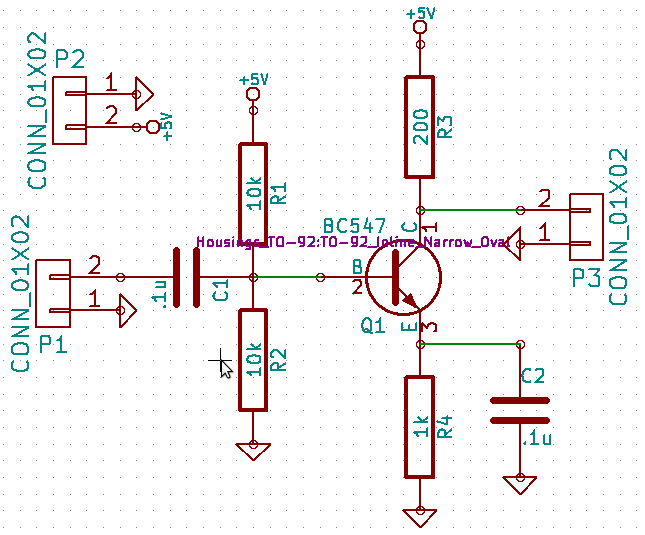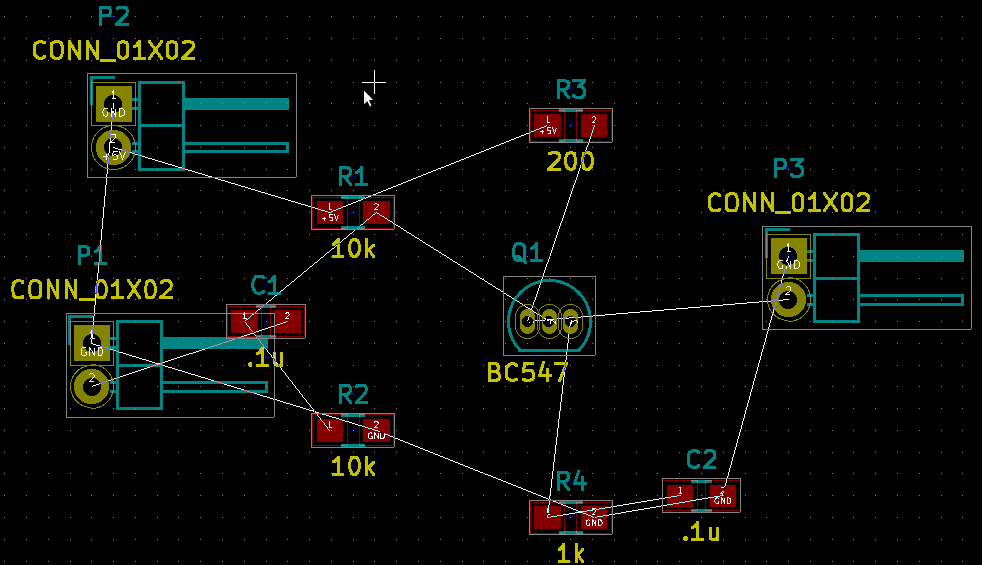Utility Kicad scripts
Making RFID readers and tags requires designing antenna inductors. This tool simplifies the process by allowing you to quickly analyze PCB spiral inductors with FastHenry to find inductance and Q. Once you're satisfied with a design, you can save a Kicad footprint to incorporate into your PCB layout.
You can use it online at http://ignamv2.linkpc.net/spiral/
For local use, download the folder rfid_calculator and run cmdline.py. Example:
$ python3 cmdline.py --help
usage: cmdline.py [-h] --width WIDTH --height HEIGHT --trace_width TRACE_WIDTH
[--mirror] --turns TURNS
(--pitch PITCH | --separation SEPARATION) [--zpitch ZPITCH]
[--frequency FREQUENCY]
[--thickness THICKNESS | --weight WEIGHT] [--fasthenry]
[--kicad_mod KICAD_MOD] [--pad_size PAD_SIZE]
(--mm | --cm | --mil | --in) [--square | --ellipse]
[--vertices_per_turn VERTICES_PER_TURN]
Calculate PCB spiral inductor with FastHenry and produce Kicad footprint
optional arguments:
-h, --help show this help message and exit
--width WIDTH Total outside width
--height HEIGHT Total outside height
--trace_width TRACE_WIDTH
Trace width
--mirror Reflect footprint horizontally
--turns TURNS Number of turns
--pitch PITCH Trace pitch (width + separation)
--separation SEPARATION
Separation between traces
--zpitch ZPITCH Vertical pitch (default 0 for planar inductor)
--frequency FREQUENCY
Operating frequency
--thickness THICKNESS
Copper thickness
--weight WEIGHT Copper weight per unit area in oz/ft²
--fasthenry Calculate inductance and Q with FastHenry (
http://www.fastfieldsolvers.com )
--kicad_mod KICAD_MOD
Save Kicad footprint to this file
--pad_size PAD_SIZE Save Kicad footprint to this file
--mm Dimensions in millimeters
--cm Dimensions in centimeters
--mil Dimensions in mils = 1in / 1000
--in Dimensions in inches
--square Generate square spiral
--ellipse Generate elliptical spiral
--vertices_per_turn VERTICES_PER_TURN
Number of vertices per turn (for elliptical spirals)
$ python3 cmdline.py --mm --width=50 --height=25 --pitch=5 --trace_width=2 --turns=3 --fasthenry --kicad_mod=/tmp/ant.kicad_mod --frequency=125e3
Analysis of 50.0 mm x 25.0 mm 3-turn 5.0 mm pitch 2.0 mm trace inductor at 125.0 kHz
Inductance: 11.9 nH
Resonant capacitance: 136.8 µF
Q: 5.4e+02
Footprint written to /tmp/ant.kicad_mod
When you first start pcbnew and read a netlist, all components are piled up in one place. This script takes the schematic and pcb files and moves the footprints to match their placement in the schematic. This is a nicer starting point to route your PCB.
You need to have python 2 installed. First, finish the schematic:
Then export the netlist for pcbnew, and run cvpcb to associate a footprint to each component. Launch pcbnew and load the netlist and footprint association, then save. These are standard steps when making PCBs with Kicad, you can check out Contextual Electronics for more detailed instructions.
My script takes the pcb file you just saved and moves the footprints to match the schematic. You need to download the script to your project directory. To run it, just drag the project file (.pro) or project folder into the script icon. Your pcb file now has placed components.
Here's the output from the schematic above:
If you want to see detailed script output (for troubleshooting), open a terminal (in Windows, use Start -> Run -> cmd.exe) and go to your project directory
$ cd %USERPROFILE%\My Documents\example_project
$ python place_footprints.py .
Found project ./example_project
Found schematic: ././example_project.sch
Found pcb: ././example_project.kicad_pcb
13:06:04: Debug: Skipping general section token 'links'
13:06:04: Debug: Skipping general section token 'area'
13:06:04: Debug: Skipping general section token 'drawings'
13:06:04: Debug: Skipping general section token 'tracks'
13:06:04: Debug: Skipping general section token 'zones'
13:06:04: Debug: Skipping general section token 'symbol'
Moving module...R1 R2 Q1 R4 C2 R3 C1 P1 P3 P2
Backing up ././example_project.kicad_pcb to ././example_project.kicad_pcb.bak6


